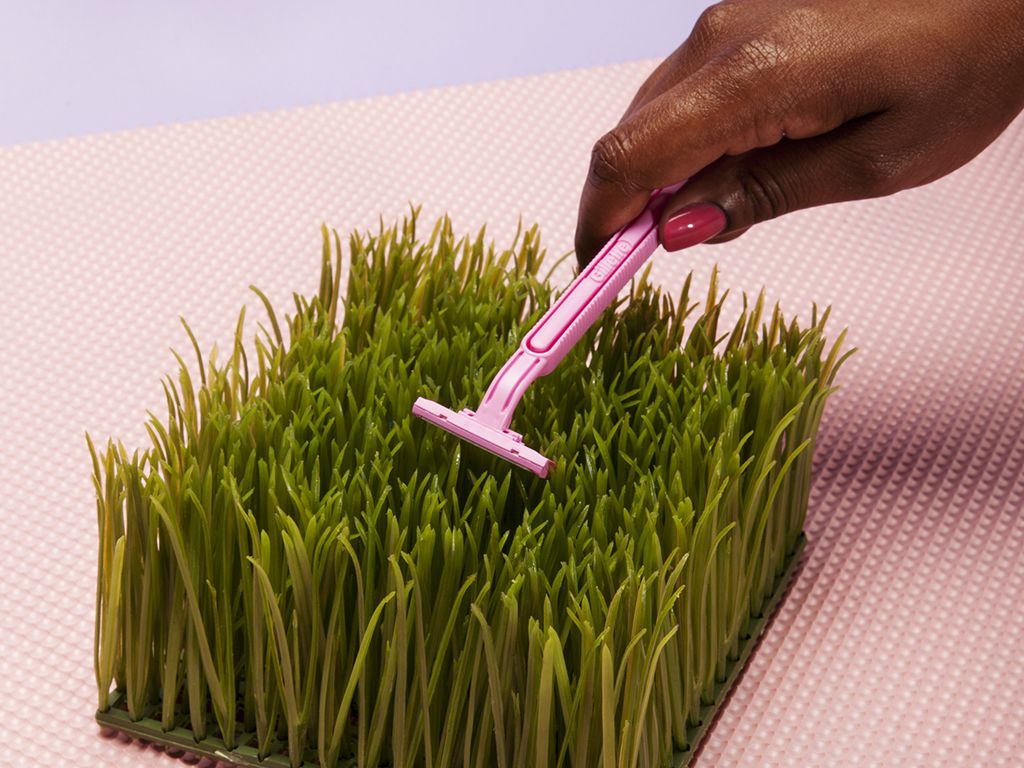8 Ways to Lighten Underarm Hyperpigmentation, According to Derms
As a dermatologist, one of the most common questions I receive in the clinic is: How do I brighten my underarms? Treating hyperpigmentation is a specialty of mine, but I will admit that this problem humbles me. Early in my practice, I called a special meeting with my mentor, Dr. Heather Woolery-Lloyd, to discuss this exact topic. Below, I’ll share with you a few of our combined pearls of wisdom.
Before we get into the how, I want to give you some context for why this problem is a little tricky. Underarm skin is delicate. In terms of depth, it is analogous to eyelid skin. This means that it is very easy to irritate this skin, and unfortunately, irritation also produces additional pigmentation. Next, underarm skin folds onto itself. This increases the absorption of any product applied to the area. This is significant because all ingredients that help with hyperpigmentation are (to some degree) irritating. So a very delicate balance is required to achieve improvement without further irritation.
I tell you this because I want you to understand more is not more. Many of the tips below will focus on minimizing irritation to the area. Patience and the willpower to not do the most will be required to see results. As a rule of thumb, the longer the pigmentation has been present, the longer it will take to see significant improvement.
With that said, ahead you’ll discover eight of the best ways to treat and lighten underarm hyperpigmentation.
If You Have an Underarm Rash, You’ll Have to Treat That First
A rash is a sign of skin inflammation and may present with redness, itching, flakiness, and/or local roughness to the skin. If any of these signs or symptoms are present, I recommend evaluation by a board-certified dermatologist for prescription anti-inflammatory treatment. Brightening treatments will be ineffective until the inflammation is addressed.
The inflammation may be due to a chronic skin condition (i.e., eczema, psoriasis), a superficial skin infection, or an allergy to a frequently used product. Once the cause has been diagnosed and controlled, brightening treatments can be started.
Possible causes of inflammation frequently include:
- Eczema
- Psoriasis
- Superficial fungal infections
- Allergic contact dermatitis from nickel or fragrance (often from deodorant)
Introduce a Combination of Gentle Physical and Chemical Exfoliants
Stop scrubbing your underarms. Physical pressure provides no benefits for treating hyperpigmentation. (In fact, it’s more likely to cause irritation and worsen the problem.) Instead, add a gentle combination of chemical and physical exfoliator into your routine a few times a week. Lactic, glycolic, and salicylic acids are effective ingredients for this area. My current favorite is Nécessaire’s The Body Exfoliator ($30). Since the product has both physical beads and chemical exfoliants, there’s no need to put pressure on the skin; just lightly glide the treatment over the skin.
Optimize Your Shaving Routine
If you shave, then keep in mind that shaving without shaving cream can be irritating to the skin. I recommend using a moisturizing option, such as EOS Shea Better Shave Cream ($4). Allow the shaving cream to sit on the skin for 15–30 seconds before shaving. Replace razor blades frequently to prevent dull blades from rubbing along the skin.
Woolery-Lloyd notes that an allergy to nickel can lead to darker underarms, though studies are lacking on the cause of this. If you also develop rashes at the location of your belt buckle or certain jewelry, you may be allergic to your razor blade. Waxing or laser hair removal are better hair removal options for those allergic to nickel.
Switch to a Hypoallergenic Deodorant (but Check the Ingredients)
Since irritation can lead to post-inflammatory hyperpigmentation, the first thing you want to do is remove anything that’s potentially causing or worsening the problem.
Since natural deodorants do not limit sweating, they tend to be highly fragranced. Some people develop allergies to these plant-based fragrances. These skin allergies typically present with redness and itching. Others develop irritation and a rash from excessive sweat.
However, natural deodorants can cause hyperpigmentation without a rash. Woolery-Lloyd notes that sodium bicarbonate is a common ingredient in natural deodorants, and this ingredient has anecdotally been linked to hyperpigmentation without a rash.
If you’ve noticed darkening of your underarms after starting a new deodorant, consider switching to a hypoallergenic antiperspirant, such as Vanicream, or a natural deodorant without sodium bicarbonate, such as Lume.
See Your Derm to Discuss Prescription Topicals
If progress is going too slowly with the above tips, or if you want to save a little time from trial and error, consider seeing a board-certified dermatologist to discuss prescription-strength topical options. Since this area is sensitive, they will be able to counsel you on how often to use products for best results. My favorite topical treatments include prescription-strength hydroquinone (formulated in a soothing gel), azelaic acid, and tranexamic acid.
KEY INGREDIENTS
Hydroquinone is a chemical compound used in products that treat hyperpigmentation. It works by interacting with the melanin-producing cells in the skin and decreasing the production of pigment.
Professional Laser and Microneedling Treatments Can Help
Since all topical ingredients are irritating, sometimes a procedural-based approach is a better option. Microneedling, chemical peels, and low-fluence laser therapy are all potential treatment options. Just remember, this will still require multiple procedures to see significant improvement.
A word of caution—I do not recommend home chemical peels on this area, due to the skin sensitivity. This is an area best left to the professionals.
Use Your Typical Hyperpigmentation Products, but With Caution
Yes, you can use the regular serums you’d use for hyperpigmentation on your face on your underarms as well, but be careful. Since the skin of the underarms is thin and the skin folds onto itself, absorption will be greater than if you applied the same product to your face. To prevent irritation, start slowly—just twice a week—and remember more is not more; apply a very thin layer, and allow the product to dry before lowering your arm. As each week passes, you can increase the frequency by once a week as tolerated. So you may be able to use the product daily or twice a day eventually, but it will take weeks to slowly build up to this point. These products are great options for treating hyperpigmentation.
Reset Your Expectations
Because of the delicacy of the underarm skin, there is no quick way to fix this problem. Rushing results will likely only worsen the problem by causing irritation and post-inflammatory hyperpigmentation. It will take multiple months of periodic in-office and/or at-home treatments to achieve noticeable results. Take a moment to reset your expectations and to also reevaluate your current treatment plan. You’re likely doing too much.








